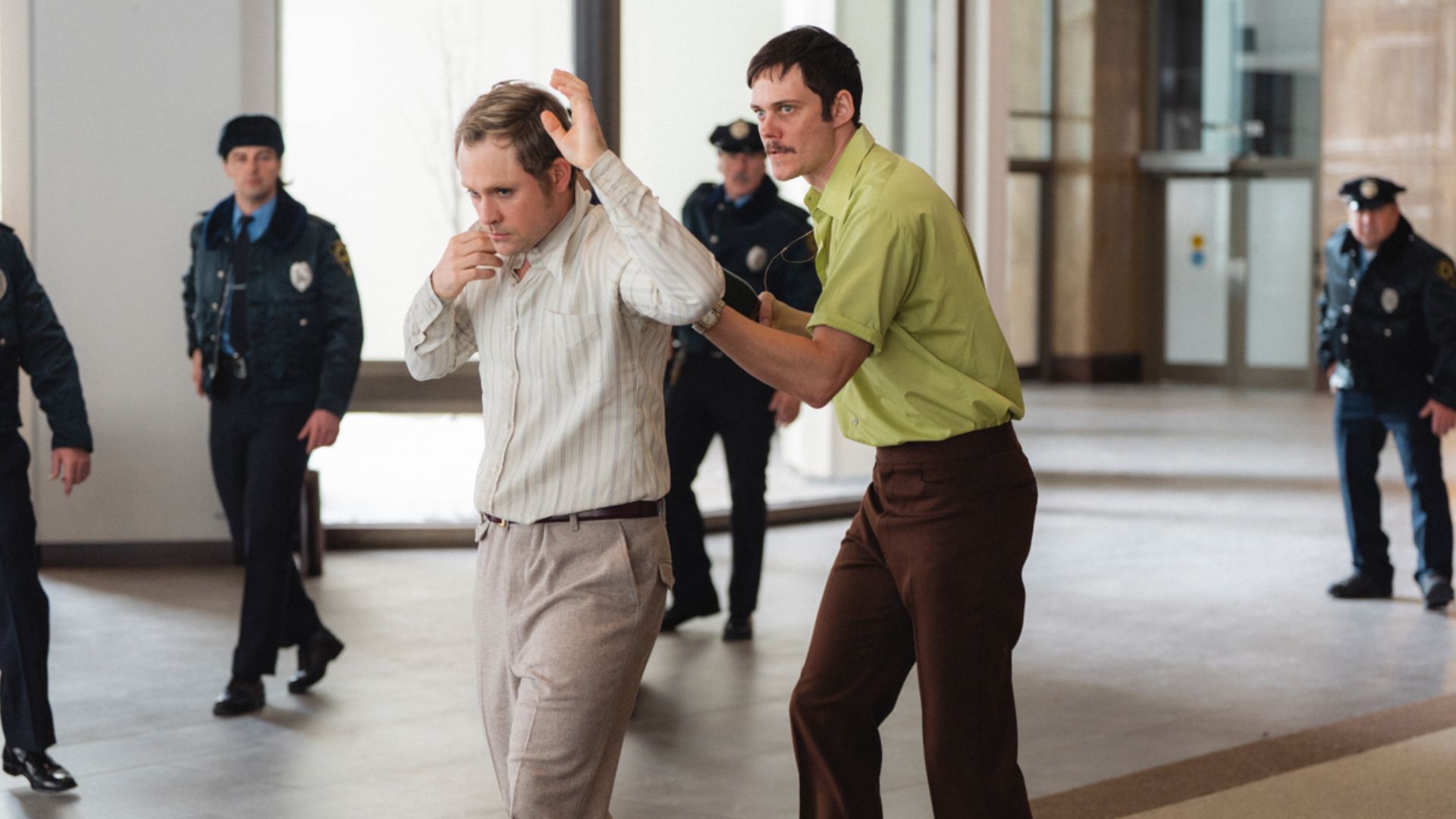
Director Gus Van Sant’s new film, *Dead Man’s Wire*, gets its name from a dangerous device connected to a shotgun, looped around someone’s neck. Any sudden movement would trigger the gun. This imagery perfectly reflects the film itself: it’s expertly crafted, but its shifting pace constantly feels like it could fall apart, creating a thrillingly tense experience.
Exploitative businesses that prioritize profit from our personal data over genuine assistance have always existed, and this story stems from that very problem. The plot centers around Richard Hall, a mortgage broker, who finds a bomb wired to his neck thanks to Tony Kiritsis. Kiritsis believes Richard and his father swindled him out of land and demands both an apology and repayment before letting Richard go. This unbelievable situation is based on a true story, and the director presents it straightforwardly, reminding us that sometimes the most captivating stories are real ones enhanced with cinematic flair.
As the film unfolds, the focus tightens as Kiritsis takes Hall from the bank, to a police car, and finally to his own home. The tension between these two characters is central to the story, and both Skarsgård and Montgomery deliver powerful performances, exploring the complex relationship between captor and captive with both emotional intensity and philosophical weight. Skarsgård, known for playing frightening roles, creates a particularly unsettling portrayal of Tony, a man of few words but intense energy. While another actor might have presented Kiritsis as simply angry, Skarsgård reveals the character’s focused rage with surprising depth and nuance. Kiritsis’ motivations are surprisingly straightforward: he believes he’s been wronged and is using Hall to expose the injustice he and Hall’s father have inflicted upon him. He isn’t motivated by personal gain, but by a firm conviction that his actions are justified, and that the world needs to understand his perspective.
Montgomery doesn’t simply portray a helpless victim; he carries a deep sense of sadness, almost as if he expects his self-centered father to choose abandoning him over admitting fault. While Hall doesn’t fully confess wrongdoing, he understands how his family has taken advantage of people like Kiritsis, which makes it hard to see him as a straightforward villain. Both characters demand that Skarsgård and Montgomery tap into hidden feelings, and both actors handle this nuance exceptionally well.
Van Sant expertly uses and subverts familiar elements of hostage thrillers, demonstrating a mastery of the genre. When Kiritsis kidnaps Hall, he’s incredibly confident in his plan, and the film cleverly highlights the inevitable problems that will arise. From a broken car key immediately after parking—forcing him to steal a vehicle—to an unexpected new receptionist, the film doesn’t ask *if* things will go wrong, but *when*. It’s engaging to watch how the story unfolds as Kiritsis’s plan starts to unravel.
Van Sant understandably sets up the broader context of the kidnapping, but the film truly shines when focusing on the relationship between the two central figures. Introducing compelling side characters, while interesting, feels somewhat underdeveloped and loosens the film’s tight focus. Myha’la plays Linda Page, a TV reporter stuck with dull assignments who sees the kidnapping as a chance to prove herself. Her character subtly highlights the challenges faced by journalists of color, who often aren’t given the same opportunities as their white colleagues, and offers a critique of the media’s rush to break stories over reporting them responsibly. However, just as the film starts to delve into these ideas, it returns its attention to the main characters. The same happens with Colman Domingo’s Fred Temple, a radio host who gives Tony a platform to share his perspective and counter the media’s sensationalism. Domingo is reliably charismatic, bringing a smooth and empathetic presence, but the film doesn’t give his character much depth beyond being a sympathetic listener.
During a frustrated phone call, Kiritsis angrily exclaims, “These people thought they could play God and failed!” Van Sant’s film is filled with a strong sense of modern outrage, despite its visual style being reminiscent of the 1970s. The film doesn’t shy away from showing the fear Kiritsis caused, and it doesn’t excuse his violent actions. However, it smartly challenges the hypocrisy of how society judges people like Kiritsis versus the large corporations he targeted. The film suggests that while banks don’t use physical force, their actions can be just as damaging and cruel. Those in power often believe they can shape the world as they see fit, but Van Sant’s film serves as a reminder that someone like Tony Kiritsis will always demand accountability for such arrogance.
Read More
- ETH PREDICTION. ETH cryptocurrency
- Cantarella: Dominion of Qualia launches for PC via Steam in 2026
- ‘M3GAN’ Spin-off ‘SOULM8TE’ Dropped From Release Calendar
- Gold Rate Forecast
- They Nest (2000) Movie Review
- Brent Oil Forecast
- Super Animal Royale: All Mole Transportation Network Locations Guide
- Spider-Man 4 Trailer Leaks Online, Sony Takes Action
- Code Vein II PC system requirements revealed
- Anthropic’s AI vending machine turns communist and gives everything for free
2025-10-20 22:19